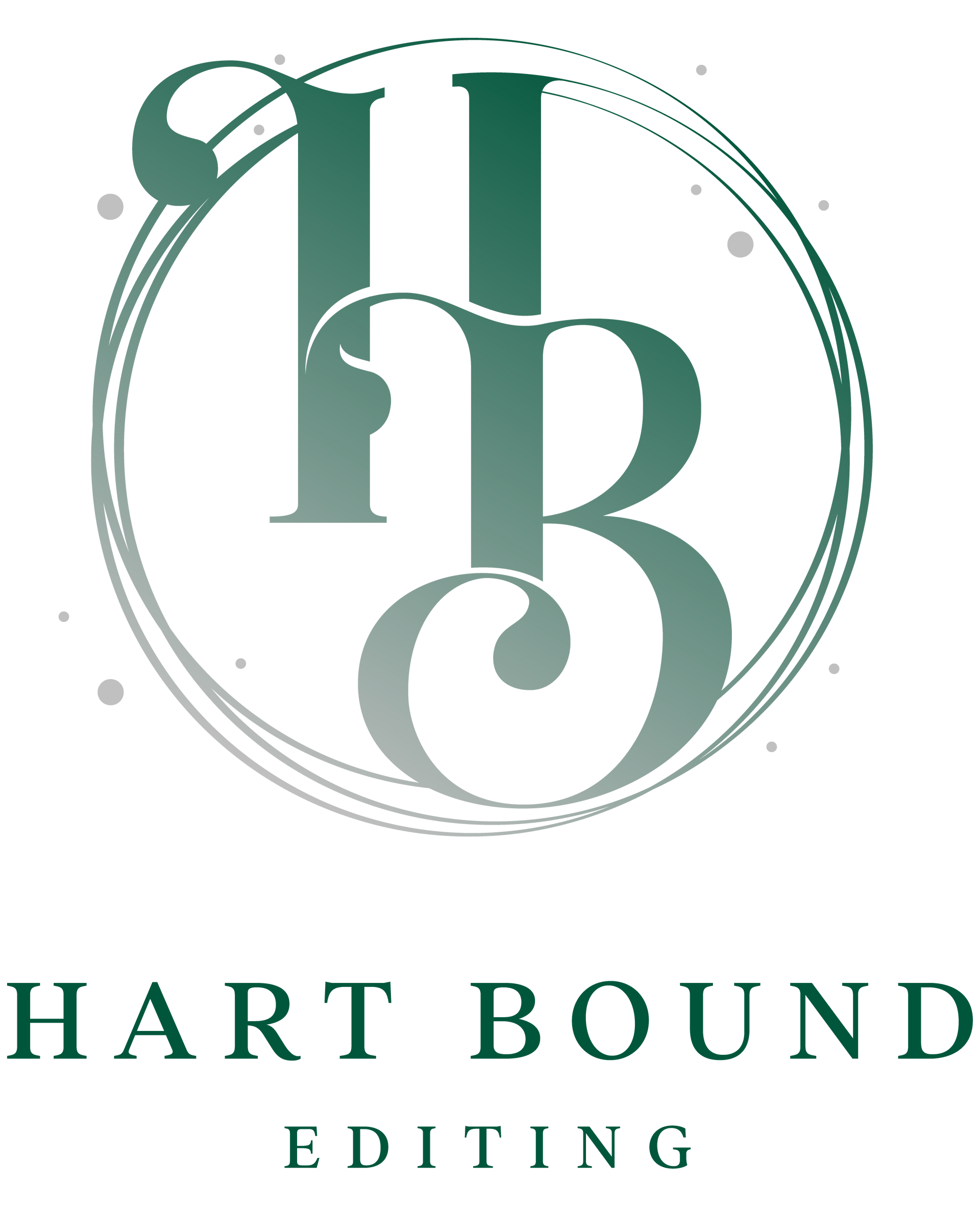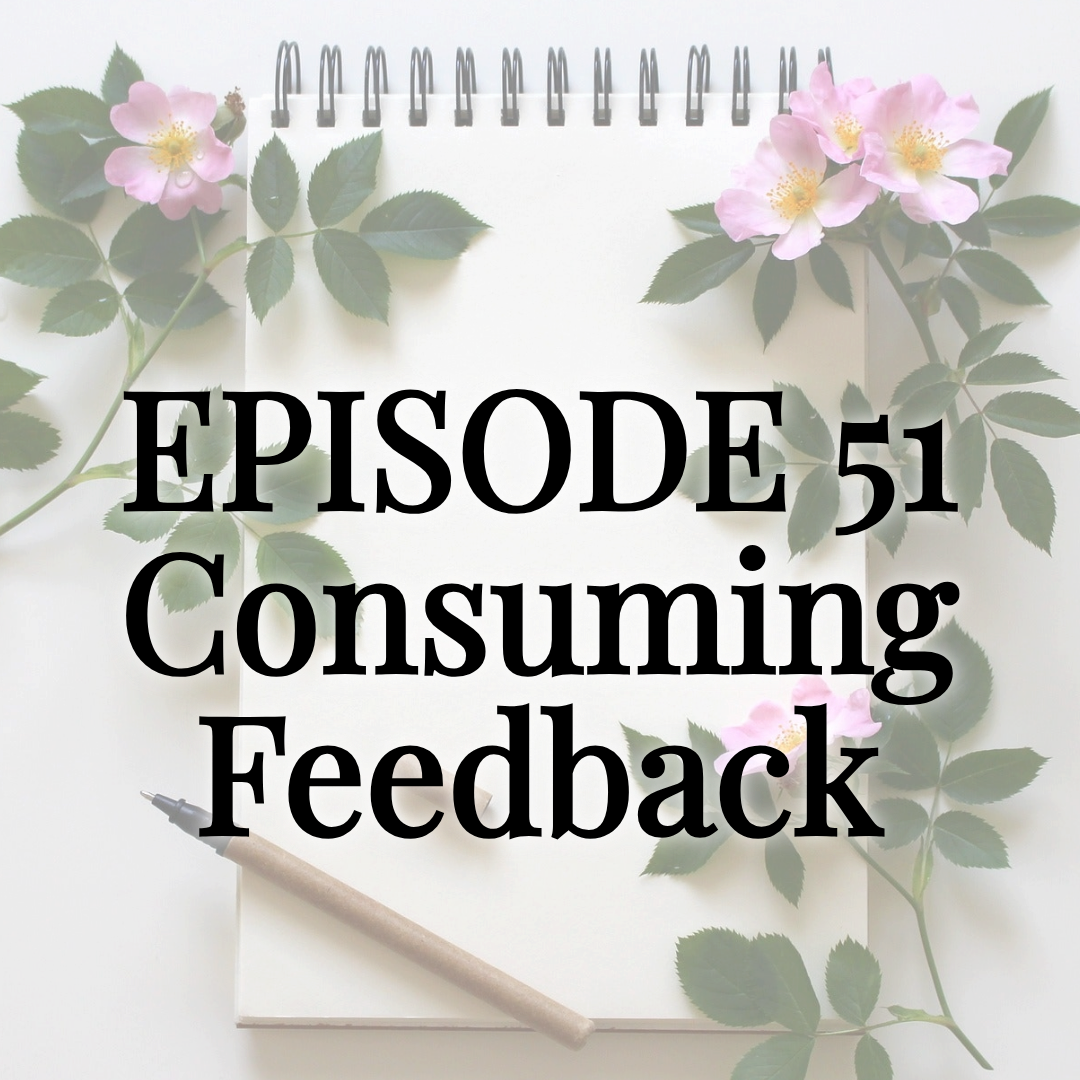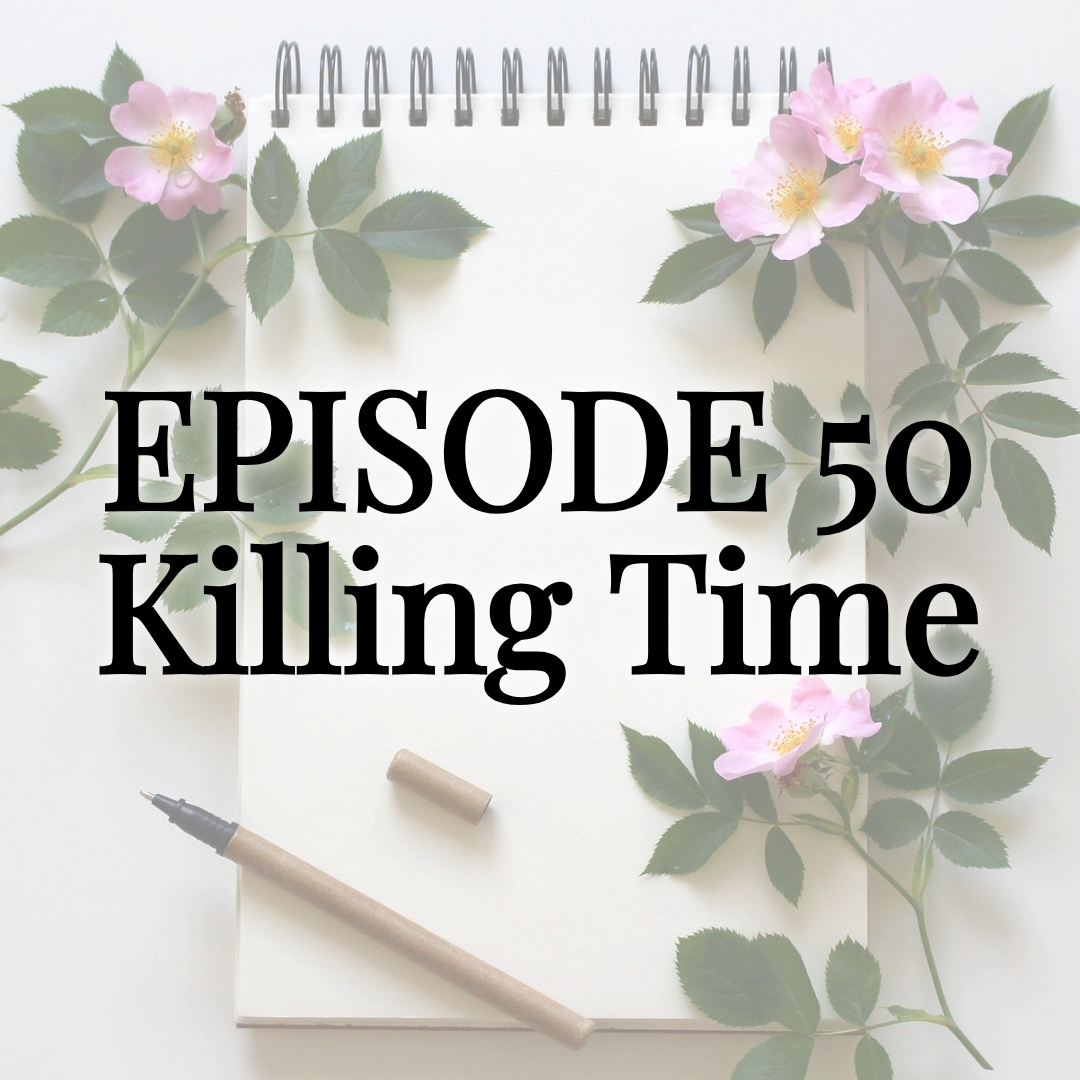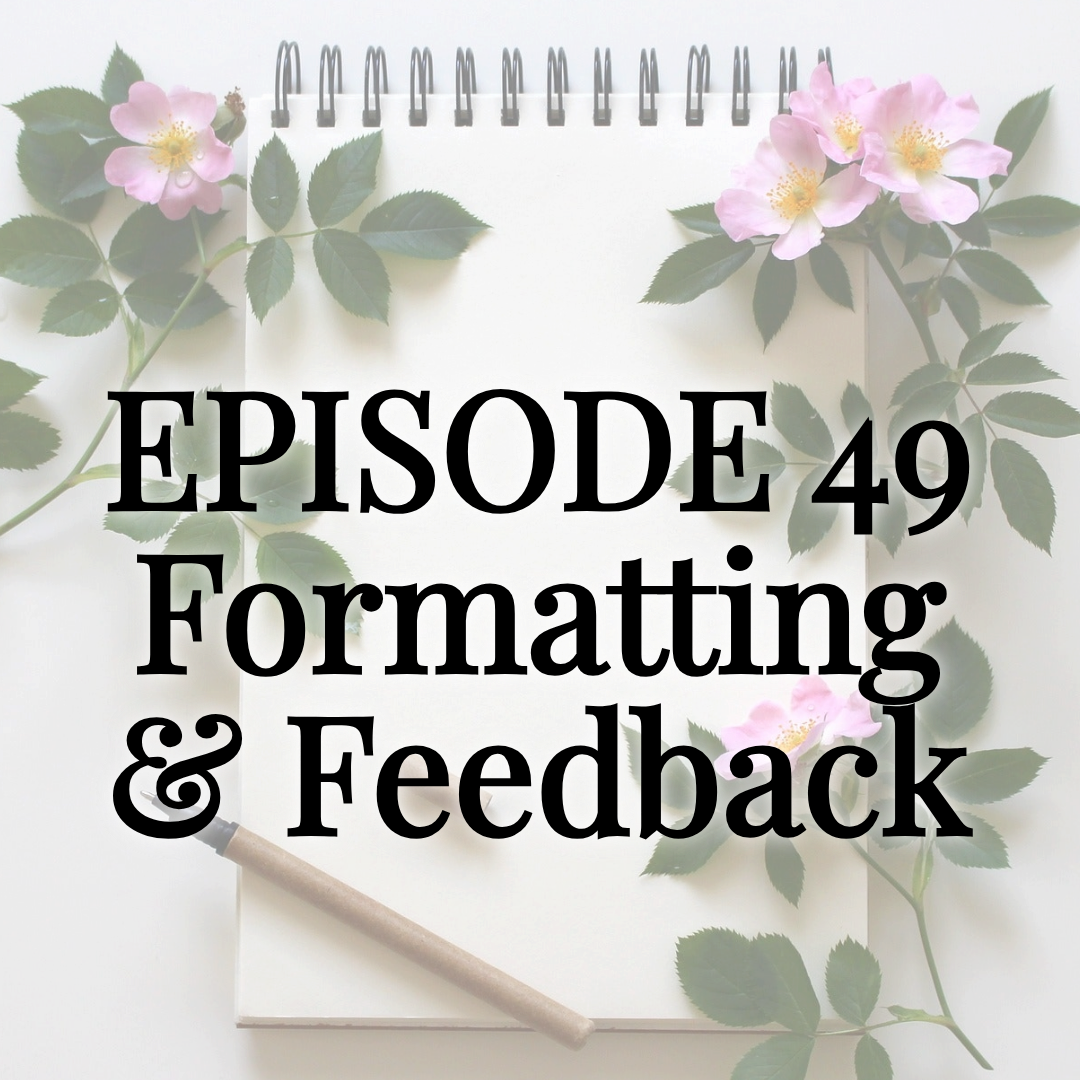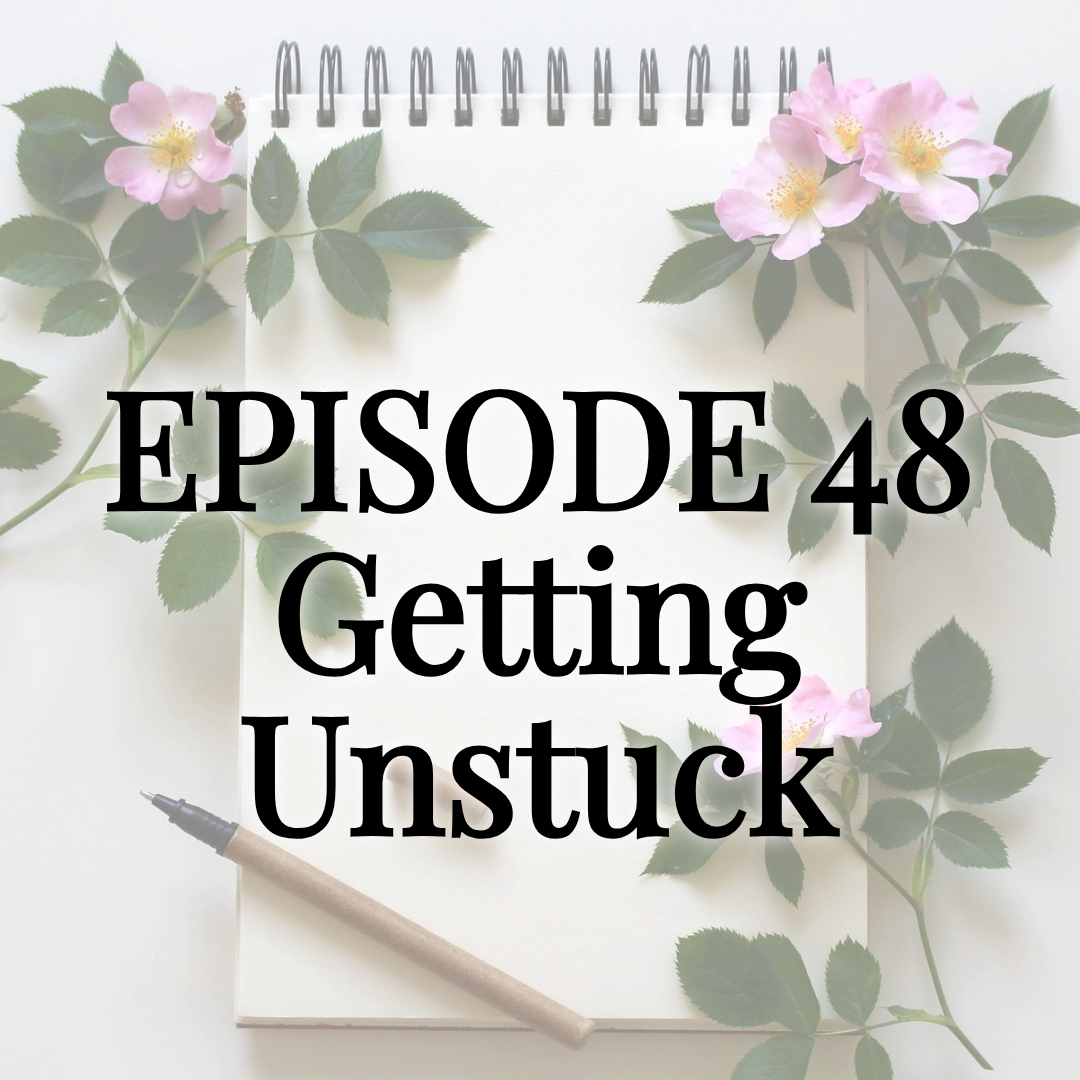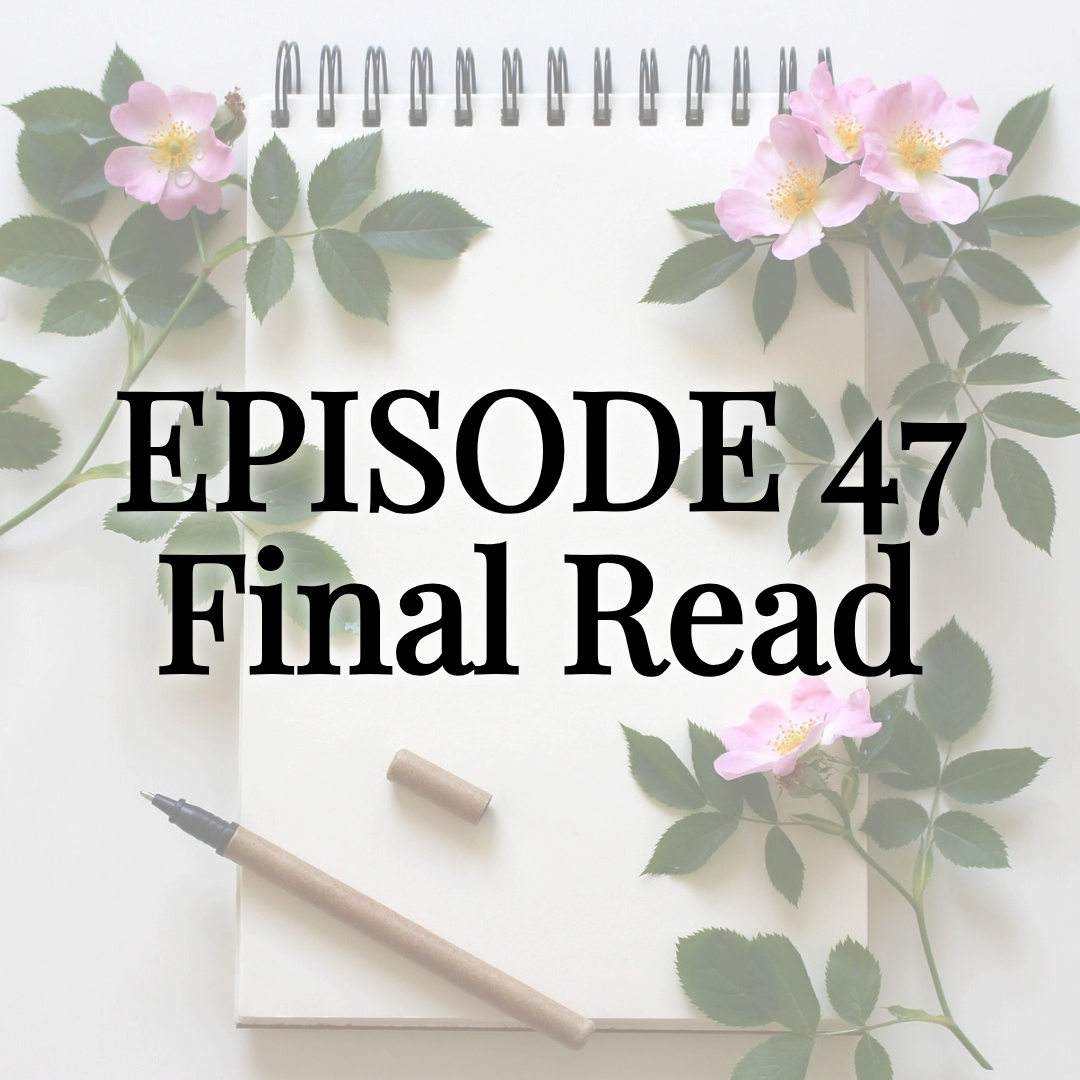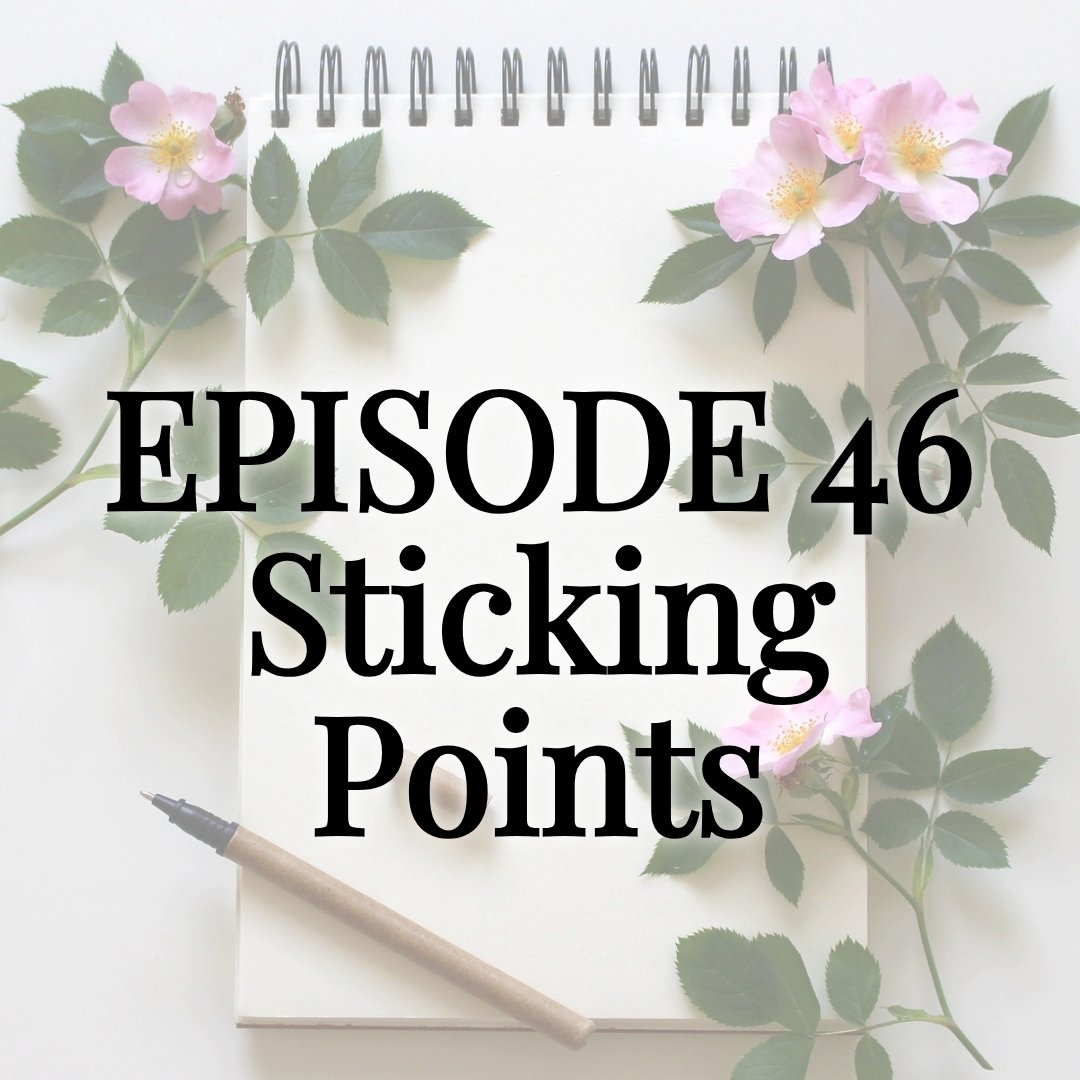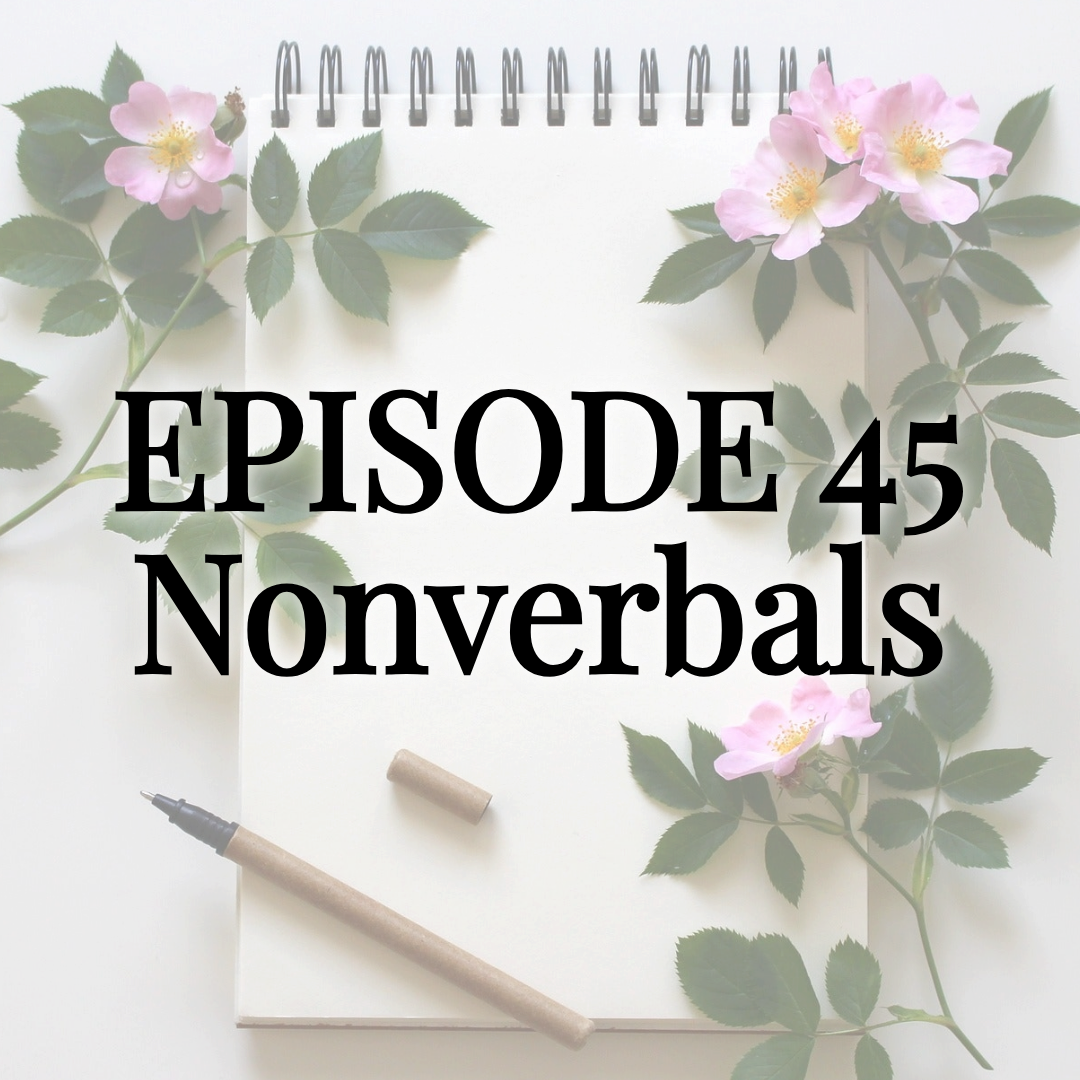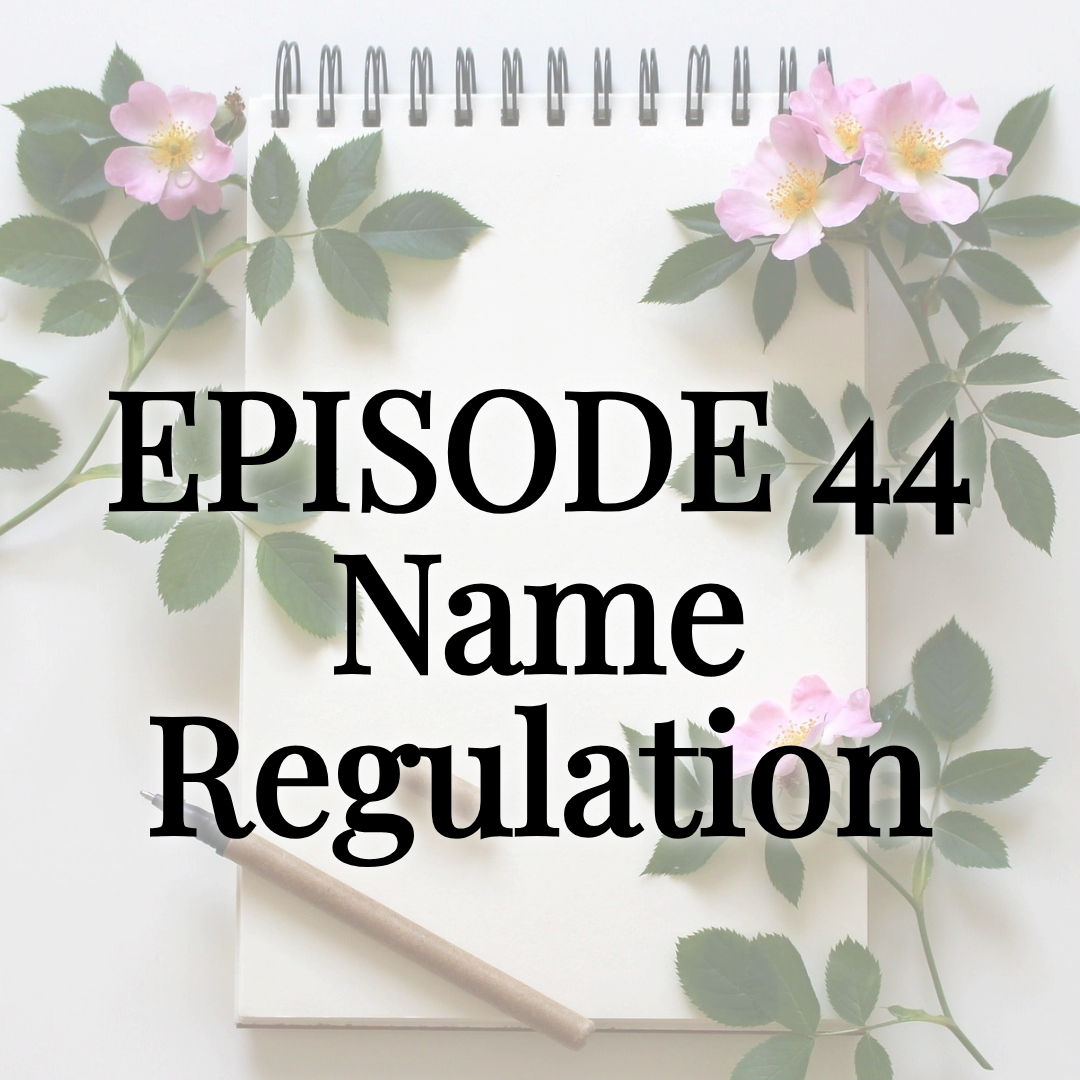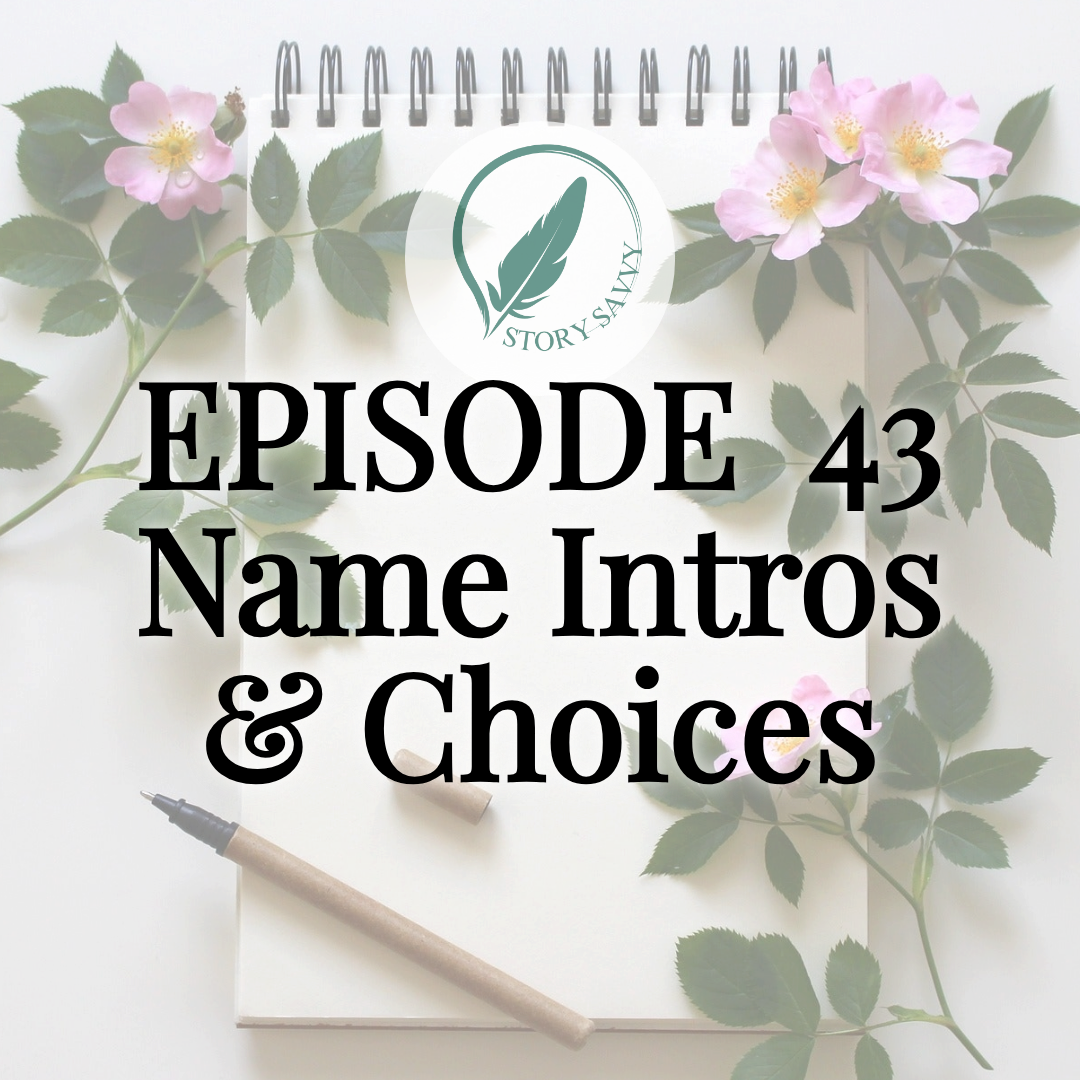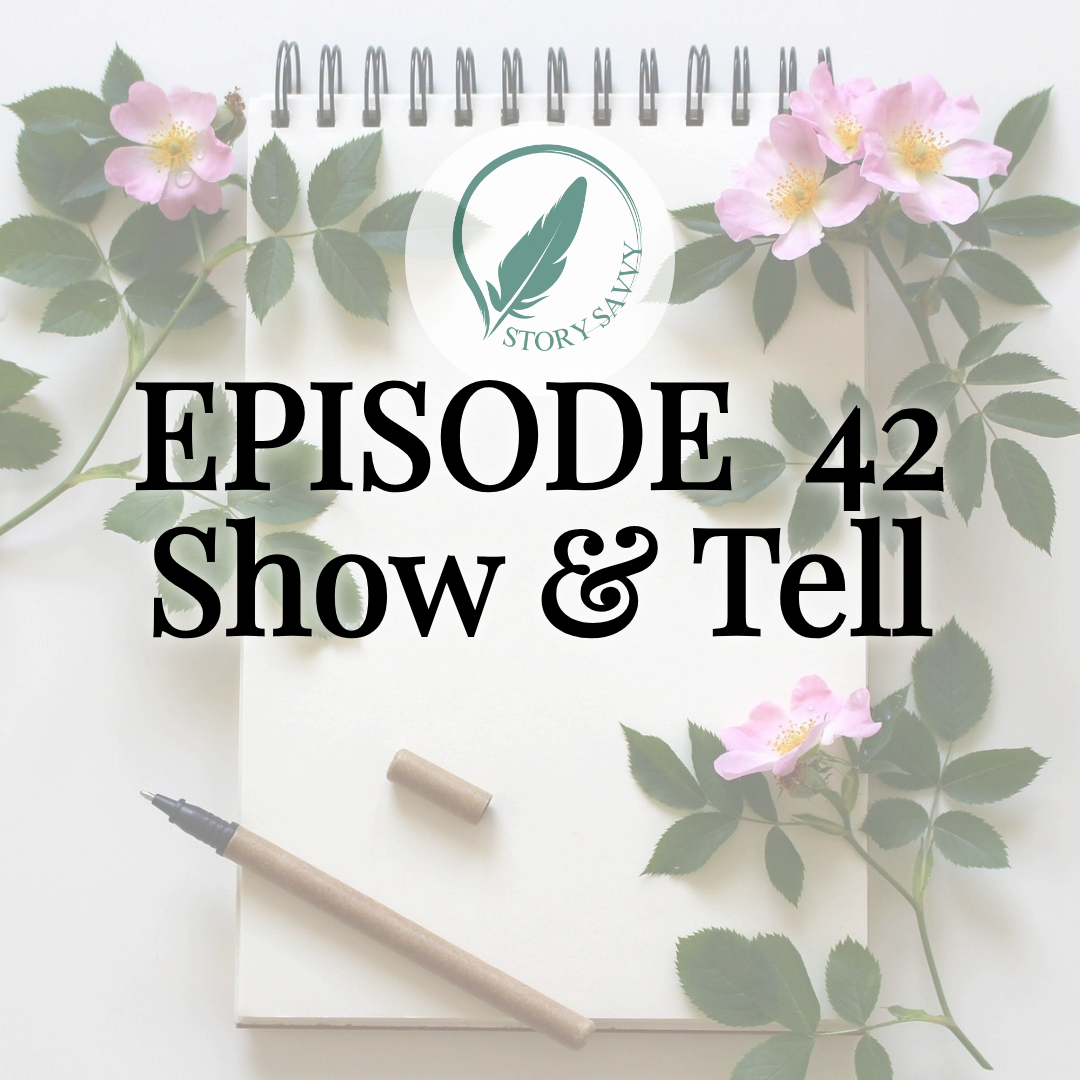Beginning, Middle, & End: Story Savvy Self-Editing Episode 7
Beginning, Middle, & End: After-episode thoughts, overview, and transcript…
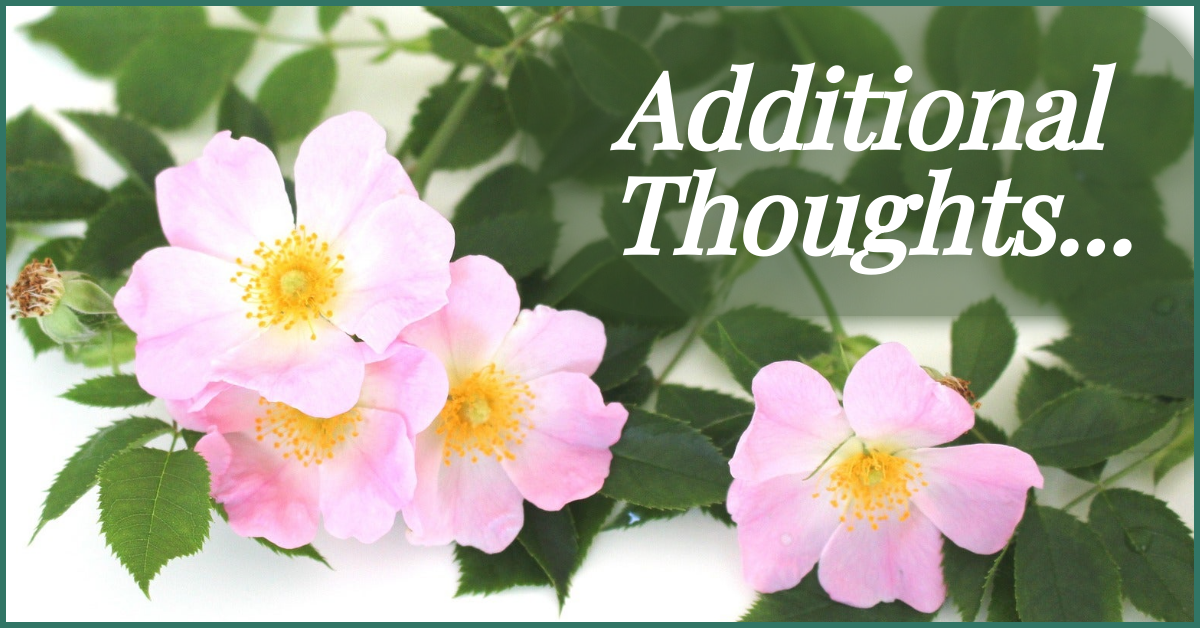
CORRECTION: A four-act structure is what I typically work with and find most helpful, not “act four.” Whoops!
CLARIFICATION: When I mention that it should be clear around the end of the middle build, so around the 75% mark, what the climax is going to be, it is totally fine if you then twist what it ends up being! It's just important that the protagonist expects a clear climax, such as a reunion, or a confrontation, or a competition, even if the truth tyrns out to be something different in a twist once they get there.
I also want to go into some more detail around the valence shifts per act, and how that scales down to scenes.
Lastly, here and my three favorite books for global fiction novel plot structure. The Story Grid, Save the Cat! Writes a Novel, and Romancing the Beat.
Happy editing!
Episode 7 Overview:
Beginning, Middle, & End
"Is there a clear beginning, middle, and end to the story? If not, how could I rearrange, add, scrap, or change things to make that feel better?"
In this writing podcast for authors, we explore what makes a good writer great. Today’s topic is the bare bones of beginning, middle, and end story structure and how to structure a novel plot around them. Strengthen your writing skills in this seventh episode of the 52-week Story Savvy self-editing series where, Rebecca, founder and host of Hart Bound Editing, provides expert insights alongside Agnes Wolfe, host of Authors’ Alcove.
This episode dives into essential storytelling concepts, including the plot development rules for what FUNCTIONING beginning, middle, and end structure are, and common mistakes writers make around this fundamental basic of genre fiction. Whether you’re a new writer refining your manuscript, or an experienced author revisiting basics, this discussion topic can help you become a better fiction writer.
This episode explores:
- What makes good character development and why it matters.
- How to write a good fantasy story with compelling structure.
- Best practices for self-editing to improve pacing and flow.
Rebecca shares practical self-editing techniques and advice from a developmental editor to help writers craft a well-structured, engaging novel. Whether you’re outlining your story or revising a draft, this episode is packed with valuable tips.
Rebecca’s Recommended Resources:
Story Grid:
https://storygrid.com
Have questions about self-editing or writing in your genre? Drop them in the comments, and we’ll do our best to answer them in future episodes!
See you next week for episode 8: The Protagonist's Pivotal Choice
Episode 7 Transcript:
Beginning, Middle, & End
Rebecca Hartwell: Hello and welcome to the Hart Editing Podcast. This is episode 7 of the weekly Story Savvy series where we tackle the 52 biggest self-editing topics and tips to help you make your good story great. So far, we have covered a number of self-editing preparation topics in this series, including genre and theme.
Today, we'll begin to tackle real story structure, starting with making sure that we have a beginning, middle, and end. By the end of this episode, you'll hopefully have a solid grasp of act and story structure in fiction and be able to check your own book more actionably around how you might need to rearrange it.
Joining me to ask all of the questions that you've been wanting to is my friend and co-host, Agnes Wolfe.
Agnes Wolfe: Hi. I am an aspiring fantasy author who hopes to release her middle grade fantasy later this year, and Rebecca here is helping me get this edited. Not only on this, but also, she is my developmental editor, so if you are looking for one, make sure you look over there. Anyway, I'm here today to get down into some more tangible story structure topics with a developmental editor, Rebecca Hartwell, who has helped dozens of authors refine their books.
So, we often hear that we need to have a beginning, middle, and end, and at first glance, I would say everything has a beginning, middle, and end, so why do we need to discuss this? So, I'm going to ask you, Rebecca, when we hear it needs to have a beginning, middle, and end, what are you actually saying?
Rebecca: Right, so this definitely seems like a no-brainer at first. Like any story obviously has a beginning, middle, and end. You can't have a story without these three parts, but a functioning beginning, middle, and end are a bit more specific, and that's what we're going to get into today.
So, a functioning beginning is where something interesting happens and the book meaningfully starts. So rather than, “oh, this is just where the story starts,” you want to think about how it starts and make sure that there is something that is serving the story that acts as a really clear delineation between “this is ordinary life, this isn't worth talking about,” and “oh, this is now a story that is worth telling.” And that beginning section of the book should typically be about the first 25% of your total word count or chapter count or however you want to measure that.
So, a functioning middle, which is the next part, is the section of a story where things go progressively wrong or progressively improve towards an end point, towards a goal to sort of bridge that gap between whatever sets the story off and whatever is going to wrap it up. And that part should include helps to the plotline, it should include hindrances and conflicts and goals. And this is where you really build up the meat of the story so that the ending can eventually be, you know, cathartic and satisfying and all that kind of stuff. And this middle part is typically the middle 50% of a story. So, from the 25% mark to the 75% mark.
Lastly, the functioning end of a story is where the climax happens, where everything builds up and comes together and there's this big showdown or, you know, the big proof of love, whatever that moment is for your genre. And the ending also includes the wrap up to show how things, you know, played out to show the aftermath and all that kind of stuff. And that's typically the last 25% of a story.
Agnes: So, I noticed that you did like 25%, 25%. I've also heard of Act 1, Act 2, Act 3. There's also that five acts that you should have and then also there's seven acts. What should we know about acts, and how does that determine what we should be hitting at each of them with our story?
Rebecca: Right. So, act structure is talked about frequently and there's so many different approaches. Like you said, you can come up with just about any number and someone out there has an act structure that they work with that, you know, divides it up into different numbers.
Three acts is the simplest and that's basically what I just described. You have Act 1, which is the first 25%. You have Act 2, which is that whole middle build section and Act 3 is that last quarter where the climax and resolution happen.
Act 4 [correction: 4 Acts] is what I typically work with, and I find that the most helpful for how I look at stories. And all that does from the three-act structure is it uses the midpoint shift at exactly that 50% mark to split that middle section into two different acts. So, you now have four equal sized acts and that's what I usually work with when I'm doing my feedback for authors or working on my own work.
Agnes: So where does the one act end and the next act begin and where does the beginning become the middle and the middle become the ending?
Rebecca: Right. So, it's not just on word count, obviously, because then you'll have, you know, an act ending in the middle of a scene that doesn't do much.
Where you actually want to mark these things depends heavily on your genre research, which is why we got to that earlier in this series. So, I, personally, when I'm working on my stories, I have a template that I created from a bunch of different pieces of advice on it out there, including Story Grid, and Save the Cat, and Romancing the Beat, and all that kind of stuff. And in that, I have a little paragraph —it's not a little paragraph. It's a very large paragraph —for sort of what is expected in my genres that I write in at each of those breaks.
So, for example, in Heroic Journey, which is sort of the baseline for most general fantasy fiction, action, that kind of stuff, then the end of act one, that marking break for that is the protagonist is going to leave their ordinary life that they've been living up to that point and enter some form of extraordinary world in pursuit of whatever quest it is that they have agreed to undertake. A really clear example of this is in The Hunger Games, that is Katniss leaving her factory life and going to the capital. That is a super clear example of crossing the threshold into an extraordinary world.
So, act two, in a four-act structure where you have that midpoint break as an act break, ends with that midpoint shift. And this should always be a big negative shift. So, it's likely to be the biggest loss for the protagonist or where they realize that they've been doing something very wrong up to that point and they're going to need to change that and they probably don't know how yet. So, in romance, this is often the very clear marker of the breakup. And I know some people don't like the breakup. There's a whole movement right now of, ah, no drama. I love the breakup. I love the drama. So, I'm a big fan of that in romance and it's very common to see that even now.
Agnes: I think that has a lot to do with knowing your genre and knowing what your reader expects. Because I'm not a huge romance, so I'm not a huge fan of that. But I am starting to get a little bit into romantasy, so I'm starting to get into that a little bit more and more. And I am starting, it's starting to.
Rebecca: And there's so many classic examples from the masterworks in the genre. Like in Pride and Prejudice, the midpoint breakup is basically where Mr. Darcy insults the hell out of Elizabeth while trying to propose to her and she tells him to go stuff it. But that's not a miscommunication trope, which I know is losing favor, and reasonably so, but it's still that midpoint shift where everything has kind of been building up and then this big-bad kind of thing happens that leaves the protagonist not feeling good and they have to reassess and all that kind of stuff. So anyway, that midpoint shift is the unavoidable either midpoint of Act 2 if you're doing a three-act structure or the break between Act 2 and 3 if you're doing the four-act structure.
So, moving on from that, the break at the end of Act 3 in a four-act structure, or the end of the middle going into the end of the story, is where the protagonist fully commits to the climax and starts preparing for it. So, this is a little bit squishy. You can start your climaxes a little bit earlier, you can start them a little bit later, but right around the end of the middle, if we're just looking at beginning, middle, and end, is where it should at least be clear what the climax is going to be.
Is it going to be a confrontation? Is it going to be a grand gesture proof of love? Is it going to be a battle? At the end of Act 3, there should be some sort of moment of; the protagonist starts doing the montage of preparing their comrades for the big battle to come. Or where the protagonist has a final moment with their loved ones to say goodbye because they're going to have to go sacrifice themselves and they think they're going to die. That's kind of that marker between the middle and the beginning of the end.
Agnes: I know when I was writing my book, I made like 50,000 beginnings. I literally spent the first five years of writing—and I deleted all of that because that was just the first four chapters. When should we begin? How do we know that we have a good beginning?
Rebecca: My favorite piece of advice on this—and it applies to the whole book, it applies to each act, it applies to scenes—is arrive as late as possible and leave as early as possible.
So, talking about it, just looking at the whole story, you don't want to start telling a story before it gets interesting. And there's, you know, people have different interpretations of that, and particularly in literary fiction, you often see a nice tableau of, “well, this is the ordinary life before something interesting happens.” In my genres in fiction and in fantasy, it's far more common to want to start things when the interesting thing happens.
It's very related to the term in medias res, which most people have probably heard if they've been researching fiction, and that literally translates or roughly translates to in the middle of things, or without preamble. And that's what I'm talking about here, where to start it. So essentially, no matter what genre or kind of story that you're writing, it's almost always a good idea to start where something interesting happens, emphasis on happens, not might happen or is mentioned or comes up or says happens, rather than building up to it over time or, you know, slowly.
For example, if the inciting incident of your book is your protagonist learning that their grandfather left them a magical map, which you could definitely do in fantasy, then starting the book at the reading of the will may likely be a much better place to start that book, rather than either showing the grandfather getting sick in the hospital and eventually passing away and figuring out the funeral. Or, on the other hand, starting the book after the interesting thing happens that kicks off the book and starting it where this person is, you know, living their ordinary life and they already have the map, but they haven't given it much attention. And so eventually you have to figure out how they pay attention or notice or pick it up.
It's best to start the book right where the interesting thing happens because that'll instantly catch attention, that'll get the readers invested, and that will give the story a clear direction for where it's going to go.
Agnes: So, we just spoke about the beginning, but one of the biggest reasons I know I don't actually finish reading a book is because the middle bores me. How can we make sure that we don't bore our readers and how can we know whether a scene does not help move our story forward?
Rebecca: Yes. This is often called soggy middle syndrome in my circles, and it's a big problem.
And a lot of the books that I read casually or that I'm editing definitely struggle from this, so we will definitely cover that.
· A few basic thoughts on this because I could do a whole episode on this by itself are... let's see. Make more things go wrong is probably the most common piece of advice that I give.
· Go deeper with your character's internal struggles to get the reader more invested in them and just to show how that character is processing and growing as a person.
· Make it harder for the protagonist to get where they need to go, so introduce more obstacles, more hurdles that they need to get over.
· Make sure that every sentence, paragraph, page, scene, chapter, all of those different elements are blatantly moving towards something big on the horizon, even if it's a two steps forward, one step back situation.
The most common reason for soggy or boring middles of stories is due to the lack of a clear or strong direction or goal for the protagonist. And if the reader isn't aching to see if they win or if they lose at whatever that is out on the horizon, then getting to the middle can really feel like a slog. And just to give a couple of examples, going back to Pride and Prejudice, there's almost always some ball that they're looking forward to or there's some wedding that they're trying to plan. And it's subtle. It's not like, “oh, there's going to be a big battle” because that would be a very different story than what Pride and Prejudice is and excels at being. But having something out on the horizon, whether that's a vacation or a fair that's going to come to town or a competition, something that's out there that has a win-loss scenario just built into it or a social payoff like a party, or a wedding, or a ball, having that on the horizon is going to help a lot with that soggy middle boredom.
Lastly, and specifically to your last question there, I recommend one really tangible tool for checking if a scene is boring or if it moves things forward. So basically, what has changed? That question alone is the tool. So, did the protagonist learn a deep secret that now has them excited and confident for an upcoming challenge? Were they nearly killed and are now doubting if they want to proceed? If the scene or chapter has an evocative and impactful change statement, like from healthy to sick, or from helpless to armed, from this state to that state. And it has to be a difference—so it has to go from good to bad, or bad to good, or bad to worse, or good to amazing, something like that. There has to be a change in that statement. Then it's likely working decently. It's moving the story forward. It's not going to be boring.
If the best change statement that you can come up with is around setting something up that's going to come or wrapping up something that's already happened, or passing over time or location that you need to for the narrative, then it's probably boring. And you should assess if a better core event could be added, that’s one solution, or if you need to scrap most of it like we talked about in a previous episode and just take the bits you like and put them somewhere else, to make the scene either do its job, do something interesting, or take it out because it's just not going to and you can't make it do that.
Agnes: So, I know that I have changed the beginning of my book a million times, and I know that that was a huge struggle and that still is probably a huge struggle of mine, is figuring out where it begins because I second guess.
But the other part that I also struggled with is the ending. And I write my ending before I write my book because I want to know where they end up. But when I got to the ending, it wasn't that I had too much ending is what I ended up having.
So how would you suggest having an ending so it's not too long, but it also is satisfying?
Rebecca: So again, I love the advice, arrive late, leave early. We talked about that at the beginning; it also applies to the end.
So, I totally get starting with an ending and then reverse engineering the rest of the story. That's what I do in my own work. I always have a climax idea first and then figure out how to build a book around that.
But the space between the climax and the end of the book does need to fit a fairly specific space for the reader. So, talking about that space and what it should fill, what it should do, is, you want the ending (for the purposes of this episode) to show whether the protagonist won or lost in the climax based on the choices that they made there. So, you absolutely do not have to show the societal or internal ramifications weeks to centuries down the road. That would be way too long of an ending.
But on the other side of that, on the too short side, if your protagonist fought the bad guy to save their sister, you have to show the joyful reunification with their sister. Otherwise, you don't have an ending. If your protagonist gave away all of their money to prove their love to the other person in this romance, then you need to show the two lovers getting back together and setting up for their happily ever after or you don't have an ending.
So, again, on the too long side, you want to leave as soon as you've shown those things, but you need to make sure that you wait long enough to show them. Leave before their lives get boring again or the deliciously cathartic feeling of the climax wears off or fades too much.
Obviously, if you're writing earlier books in this series, you don't want to close all of the open questions. You don't want to wrap everything up. You do want to mention a few things that are still open, and you want to make sure that you mention them towards the end. Don't trust that readers are going to remember an open question that you had halfway through the book and think, oh, I need to read book two because of this question. You have to bring it back up again in the last chapter or two.
But if you're writing standalone or the last book in the series, just make sure that you wrap everything up and then stop boring the reader.
Agnes: I know one of my biggest reasons why my ending got changed dramatically is because I kept hearing things about not having a cliffhanger. My book definitely has some loose ends, but my original ending had a very clear cliffhanger, which I had to take out. And I realized when I had to take that out, I also had to also take out some of the stuff that kind of hinted at it too.
So, what are your feelings on cliffhangers? Is it okay to have them if you're going to have another book, or should you wrap it up in a nice pretty bow so that everybody is happy?
Rebecca: It depends. And the answer for all of those considerations is kind of somewhere in the middle. So, under the definition of a cliffhanger being a total lack of ending, where the book ends in the climax, like a 1960s Batman episode, then no, I warn people away from them. Because you're not delivering what you promised to the readers.
Readers, particularly these days, are spoiled for choice. And they can see behind the curtain of the publishing industry, the indie industry, much more than previous generations could. So, they're thinking about author motivations and that sort of stuff more. So, a true cliffhanger is more likely to look like a cash grab by the author, and maybe like they're thinking about their own bottom line more than the reader's experience, then it's going to look like good storytelling.
And you'll get a good chunk of readers who will never read your work on principle, like me, I'm sorry, unless I'm being paid to, and a chunk of readers who won't read on because you failed to deliver the number one most vital payoff of reading long-form fiction, which is catharsis and satisfaction. The definition of cliffhanger is that you are ending the story before you deliver catharsis and satisfaction, which is the whole point of reading for a lot of readers.
However, I also want to mention that some people will also call books that just leave some plot threads dangling out into the next series cliffhangers, despite still delivering a good dose of catharsis for the core events of that book. And that kind of cliffhanger I highly encourage everyone do because that is adding to that payoff of having that little note left at the end, “oh, maybe there's going to be more, but I still got the payoff.”
Agnes: Yeah, I did end up leaving some loose ends because I couldn't not leave some loose ends with having the story. But I did end up taking away my biggest cliffhanger because the more I learned about stuff, I'm like, “okay, I don't think that people are going to appreciate it as much as I think that they will.”
Rebecca: Especially for middle grade. I feel like kids are more expecting to have that complete story, especially since it might not be in their agency to go buy the next book. They might have to depend on their parents for that.
Agnes: That's very true. So, what are signs that our story needs to have a complete structural change? We've, you know, the beginning, middle and end and we realize that, oh, something needs to change.
Rebecca: Right. That's kind of what this whole series is about, but I'll try to answer just around the topic of this episode, which is beginning, middle and end. So first of all, do some research—and I'm sorry, you're going to hear me say that a lot in this whole series—because every genre is going to be a little bit different.
So do either primary research, like reading books in your genre, or secondary research, like reading nonfiction books, or blogs, or listening to podcasts specific to your genre and to writers in your genre. And this is all to figure out what's expected. So, like with genre, where we're writing down the genre expectations as far as what characters we have, what moments we hit, see what marks those big act separators in your genre.
So, what around the one quarter mark says, “oh, something big is changing, we're moving from act one to act two?” Same for the midpoint, same for roughly the 75% mark.
So, once you, when you're doing that, and once you've done that, flag where you think those moments like the first kiss or the entering the extraordinary world for that act one break are in your own work. Down to the paragraph, if you really want to do this exercise. Flag the paragraph where you're like, “this is the moment.”
Then take your total word count or your total page count, which whatever program you're using should provide that information, it should not be hard to find that. Divide that into roughly quarters, mark where those would be, and see where your markers are falling. So, if your crossing the threshold moment or whatever your act one break is, from act one to two is only a sixth of the way in, that's a problem. You want it to be a quarter of the way in. If your midpoint shift is two chapters before your climax in a 90,000 word fantasy, that's also a problem. Is the last third of your whole book the resolution? That's not ideal.
So, once you've done these, once you've marked them, then you need to take a look at how you could restructure—so, moving chapters around and tweaking them so that they fit in the new space—to better get those moments where they need to be. And this might mean just rearranging a subplot. This might mean overhauling the main plot. It's going to depend heavily on your story.
And I do want to say here that I do not encourage obsessing over this, because I did in my first book and it cost me like six months and I got almost nothing out of it. So close is fine. It does not have to be that your paragraph, that is the act one break in a 100,000 word novel, is exactly 25,000 words in. That’s not going to do your story any favors, nor you as a person and an author. But 20k to 30k words into the book is going to be a healthier place and a better reader experience than if that act break is less than 10k words or more than 40k words into the story.
One other thing that I want to mention briefly here, since I could go so deep into this topic all on its own, is that the global story arc is generally a net positive or improvement for the protagonist over the course of act one. So, from the first word of the book to that act one break is usually the protagonist's life improving or them gaining extra direction, something like that. Act two, which I'm calling 25-50%, is generally a negative, so they're hitting hurdles, they're having to deal with difficult topics. Act three, so middle to 75%, same thing. And then act four, where you have the climax and the resolution, is typically another positive. So, they're moving from whatever state they're in before the climax, which is probably dread or heartbreak or whatever that is, into, (if it's a prescriptive story,) the win at the end of the climax and then showing how they're benefiting from that in the resolution.
And I have mentioned cautionary stories in a previous episode. Those are an exception. If you want answers about that, email me. But most stories are prescriptive, so it's going to do that positive, negative, negative, positive sort of general arc.
Agnes: So, I know we need to wrap up, but I did want to ask one last question. When we are checking how well we did with our beginning, middle, and—regardless of if we're doing that using acts or whatnot—what should we be looking for or considering? Like, what are the key elements that we can be assured that we have a beginning, middle, and end?
Rebecca: So, pretty much what I suggested around the last question, but I will also add that I recommend you go back to the absolute basics. So, no matter how much fancy checking you want to do around this topic, do you have an event which sets the story in motion? Yes, or no? Okay, cool. Do you have an ending where everything gets wrapped up? Yes, or no? Great. Now, do you have a bunch of things linking the two so that it makes sense how your protagonist gets from the beginning to the end? Yes, or no? Do you have some challenges in the mix? Yes, or no?
That is the absolute baseline. And if you can check those things, that's better than nothing.
So, if you have those things, then you have a story with a beginning, with a middle, and with an end that is in good enough shape that a developmental editor can help you refine it, or you can do so on your own over the rest of the self-editing series.
Agnes: Well, thank you so much. Your insight has been very helpful. I really appreciate you just being willing to answer all of my questions.
Rebecca: Of course, happy to help. We frankly could have done several more episodes just about the global act structure, as this is my niche, but hopefully this was enough to use without getting overwhelmed.
So next week we will focus on our characters in one of the most important moments—specific, individual moments—any of us have in any story.
Until then, I would like to thank our listeners. If you could please help us out by liking and subscribing to the Hart Bound Editing Podcast and the Authors' Alcove Podcast, we would very much appreciate it. And you can find lots more content for fantasy authors and readers beyond this joint series over there.
Rebecca: Thank you so much for listening to the Hart Bound Editing Podcast. I look forward to bringing you more content to help you make your good story great so it can change lives and change your world. Follow along to hear more or visit my website, linked in the description, to learn how I can help you and your story to flourish.
See you next time!
